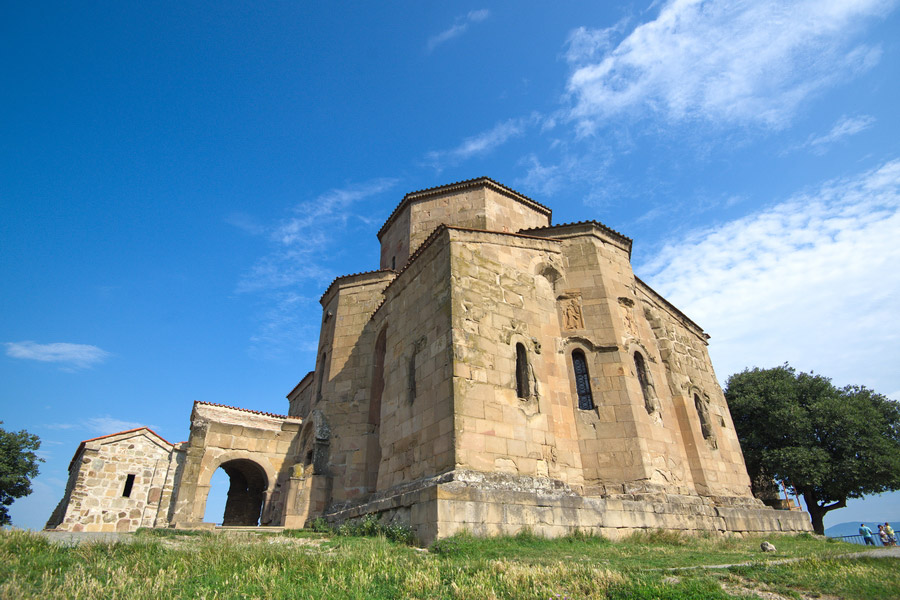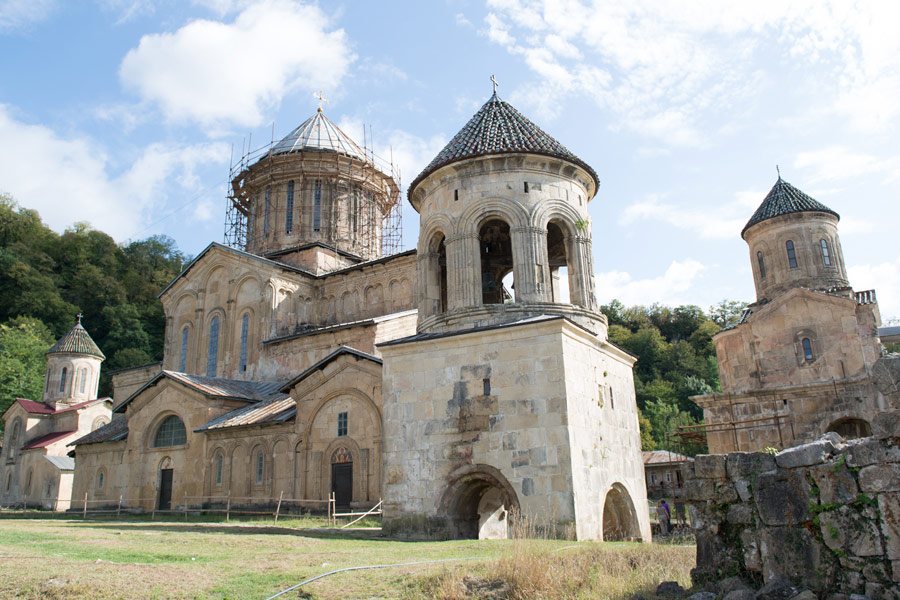UNESCO World Heritage Sites in Georgia

Georgia and UNESCO
Nestled in the Caucasus region, the beautiful country of Georgia boasts a rich cultural heritage spanning thousands of years. With its ancient architecture, warm hospitality, and unique traditions, it's no wonder Georgia caught the attention of UNESCO back in 1992. Two years later, in 1994, significant religious objects in two regions of Georgia were granted UNESCO protection.
Since then, Georgia has actively participated in UNESCO initiatives, cooperating in the fields of education, science and culture. But the work doesn't stop there. Dedicated efforts are also being made to preserve and monitor the condition of the country's World Heritage sites. From the stunning medieval churches of Mtskheta to the breathtaking natural beauty of Upper Svaneti, Georgia's treasures continue to captivate and inspire visitors from around the globe.
UNESCO World Heritage Sites in Georgia
Under the auspices of UNESCO, there are three cultural and historical sites and one natural site in Georgia.
- Historical Monuments of Mtskheta (included in 1994)
- Gelati Monastery (included in 1994)
- Upper Svaneti (included in 1996)
- Colchic subtropical forests and wetlands (included in 2021)
Historical Monuments of Mtskheta

Step into the ancient world of Georgia's Mtskheta, where history is alive and well. Founded before the common era, this city was the birthplace of Christianity in Georgia in 337 AD. Now, its most significant landmarks have been recognized by UNESCO. The Holy Cross Jvari Monastery, the Samtavro Monastery, and the Svetitskhoveli Cathedral are all iconic sites that date back to the 6-11th centuries. Immerse yourself in the rich culture and fascinating history of this ancient city, where every step is a step into the past.
Gelati Monastery

Take a journey to the heart of Georgia's architectural golden age at the Gelati Monastery. Founded in the 12th century in Kutaisi, the Gelati Monastery is a stunning display of Georgian architecture at its finest. Within the monastery's main cathedral lies the largest collection of Byzantine and post-Byzantine paintings in Georgia. And that's not all - the Gelati Academy, once located on the monastery's grounds, was home to some of the greatest minds of the time. Come explore the beauty and history of the Gelati Monastery, a true gem of Georgian culture.
Upper Svaneti

Looking for a hidden gem to explore on your next adventure? Look no further than Upper Svaneti in Georgia! This breathtaking mountainous region is home to charming villages filled with ancient towers and traditional homes. The Svans have lived here for centuries and their unique culture and traditions have been preserved throughout the ages.
You'll be awe-struck by the stunning views of the surrounding mountains and valleys, as well as the medieval churches and towers that dot the landscape. The towers themselves were not only used for housing but also as a form of defense against invaders, adding to the region's fascinating history.
Colchic subtropical forests and wetlands
But that's not all Georgia has to offer. Head to the Colchic subtropical forests and wetlands along the Black Sea coast for a truly magical experience. This natural wonderland spans an impressive 80 kilometers and boasts a rich variety of flora and fauna, including several species under threat of extinction. The tropical forests here are some of the oldest broad-leaved forests in the world, while the wetlands serve as a crucial stopping point for millions of migratory birds each year.
- Alaverdi Cathedral. It is a cathedral dedicated to Saint George, constructed in the 11th century in Telavi. Interestingly, some of the oldest buildings within the complex actually date back to the 6th century.
- Ananuri Fortress is a remarkable 16th century construction located 70 km away from Tbilisi. This impressive complex comprises of several churches, towers, bell towers, a reservoir, and a spring.
- David Gareji Monastery Complex. In this area, around 20 cave male monasteries were established in the 6th century. Remarkably, some of the temples still boast frescoes that date back to the 8th century.
- Dmanisi Archaeological Site. The remains of a hominid - Georgian Man - who lived on this territory 1.75 million years ago, were found here.
- Gremi. All that remains of the city of Gremi, which was the capital of the Kakheti Kingdom from the 15th century, is the Archangel Michael church (16th century), the royal tower, and parts of baths, houses, temples, and trading complexes.
- Kvetera. This church was built in the eponymous fortress city in the 10th century and is still active.
- Mta-Tusheti. This historical region located in Kakheti features medieval housing and the natural landscape of the National Park.
- Nikortsminda. The early 11th-century Cathedral of St. Nicholas, located in the historical region of Racha, is a notable architectural marvel. The old frescoes in the cathedral are also worth mentioning.
- Samtavisi. The St. Isidore of Samtavisi Cathedral, located 30 km from Gori, was constructed in the mid-11th century. Today, some fragments of the 17th-century wall painting can still be seen.
- Shatili Village. This historic village in Mtskheta-Mtianeti has a rich history, with notable medieval towers, residential buildings, and chapels.
- Historic Centre of Tbilisi. Dating back to the 5th century, this city has an impressive collection of archaeological and cultural-historical monuments. Visitors can explore many buildings from the 6th century, such as the Anchiskhati, Sioni, and Metekhi churches, as well as buildings from the 17th-19th centuries. Of special interest are the old residential quarters.
- Uplistsikhe. This ancient fortress city, located near the city of Gori, was founded no later than the 4th century BC. Today, no one lives in the city, but there are many interesting architectural structures and artifacts.
- Vani. Dating back to the 7th century BC, Vani is an ancient city located in Imereti. The site features remnants of residential and defensive structures. Additionally, numerous prehistoric findings from Vani are exhibited in the National Museum of Georgia.
- Vardzia-Khertvisi. This territory boasts a one-of-a-kind rock monastery dating back to the 12th and 13th centuries, alongside historical monuments from the 8th to the 16th centuries that include churches and the remnants of defensive structures. Furthermore, 17th century BC tombs have been discovered in this area.
Objects removed from the UNESCO World Heritage List:
- Bagrati Cathedral (included in 1994, removed in 2017). This is an 11th-century Assumption Cathedral located in Kutaisi. It was removed due to a violation of its integrity and authenticity during the reconstruction process.
Ancient cultural sites in Georgia listed on the UNESCO World Heritage List attract thousands of tourists from all over the world every year. Walking through the old churches of Mtskheta, the famous Gelati Monastery, or Upper Svaneti can take hours, and yet it's still impossible to fully grasp the greatness of these sites. That's why visitors keep coming back to Georgia again and again.
Discover more about Intangible UNESCO World Heritage Sites in Georgia.

